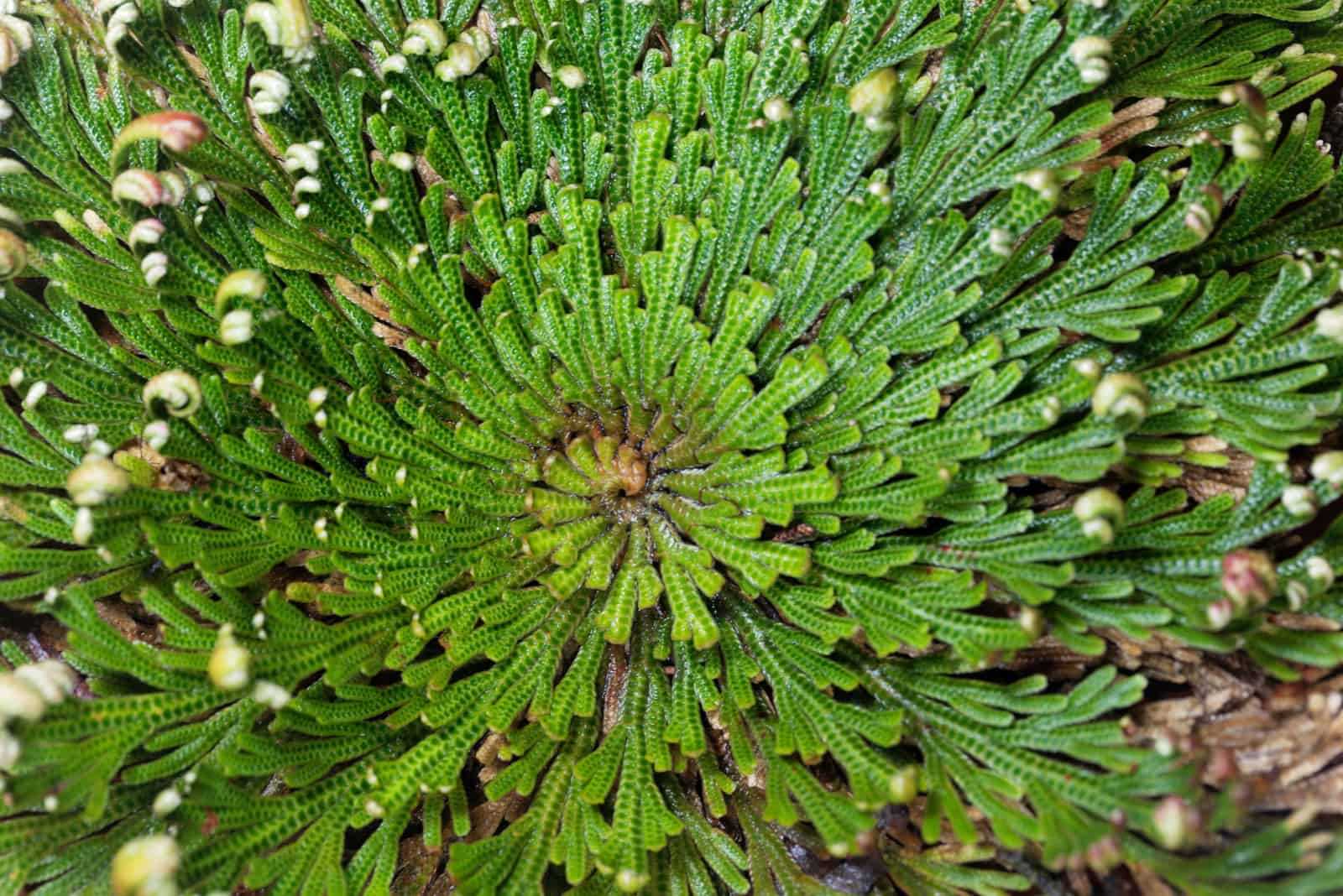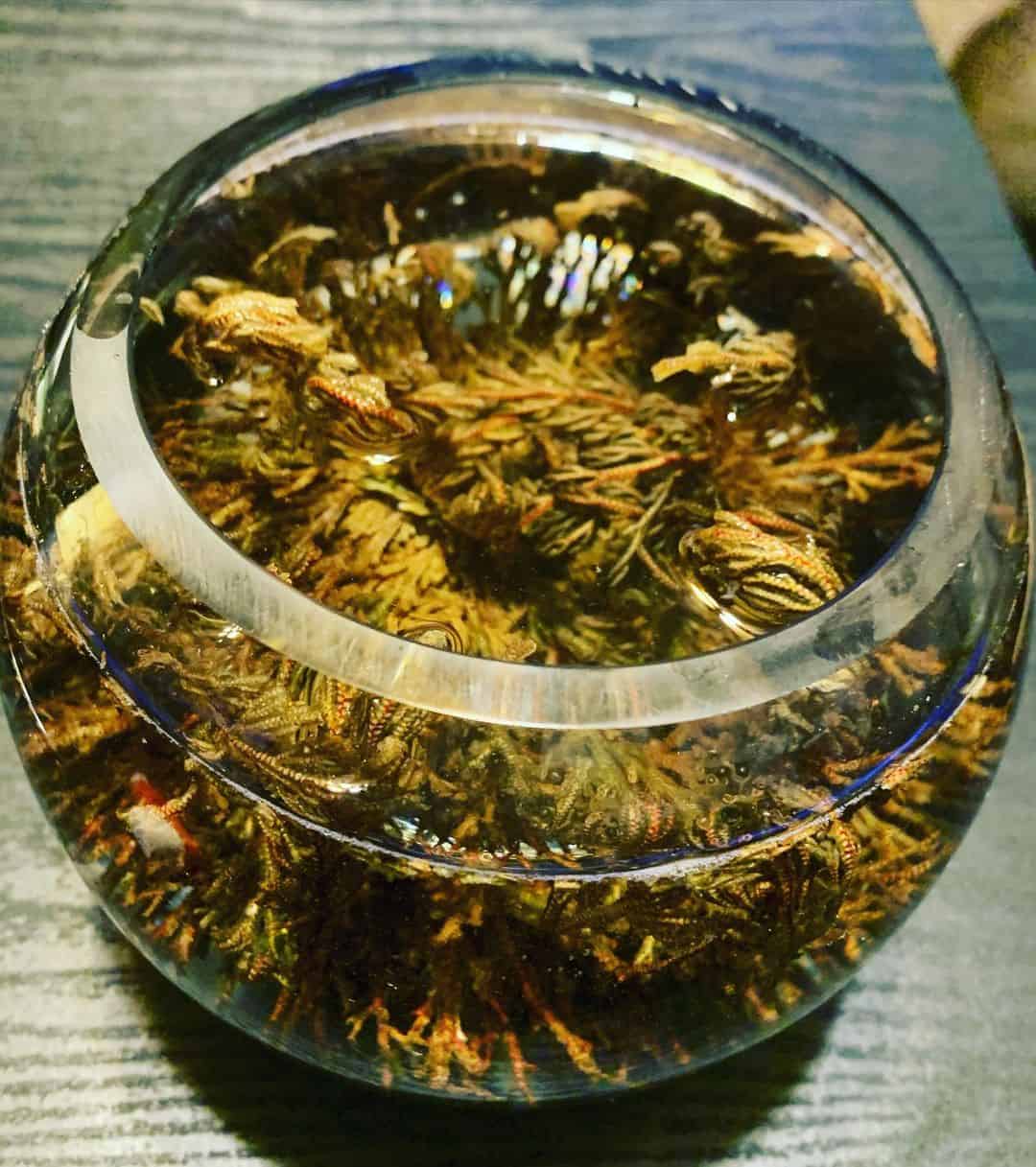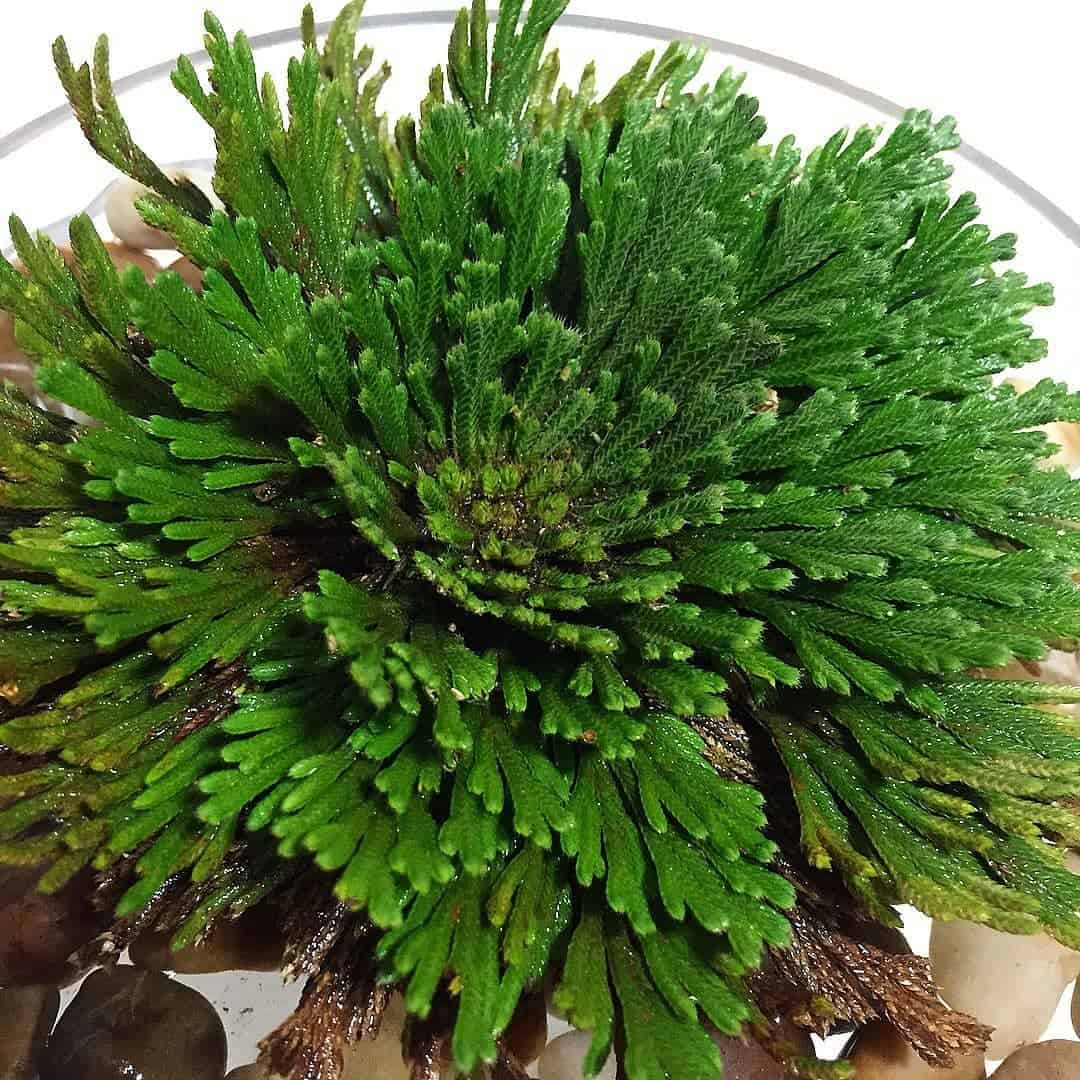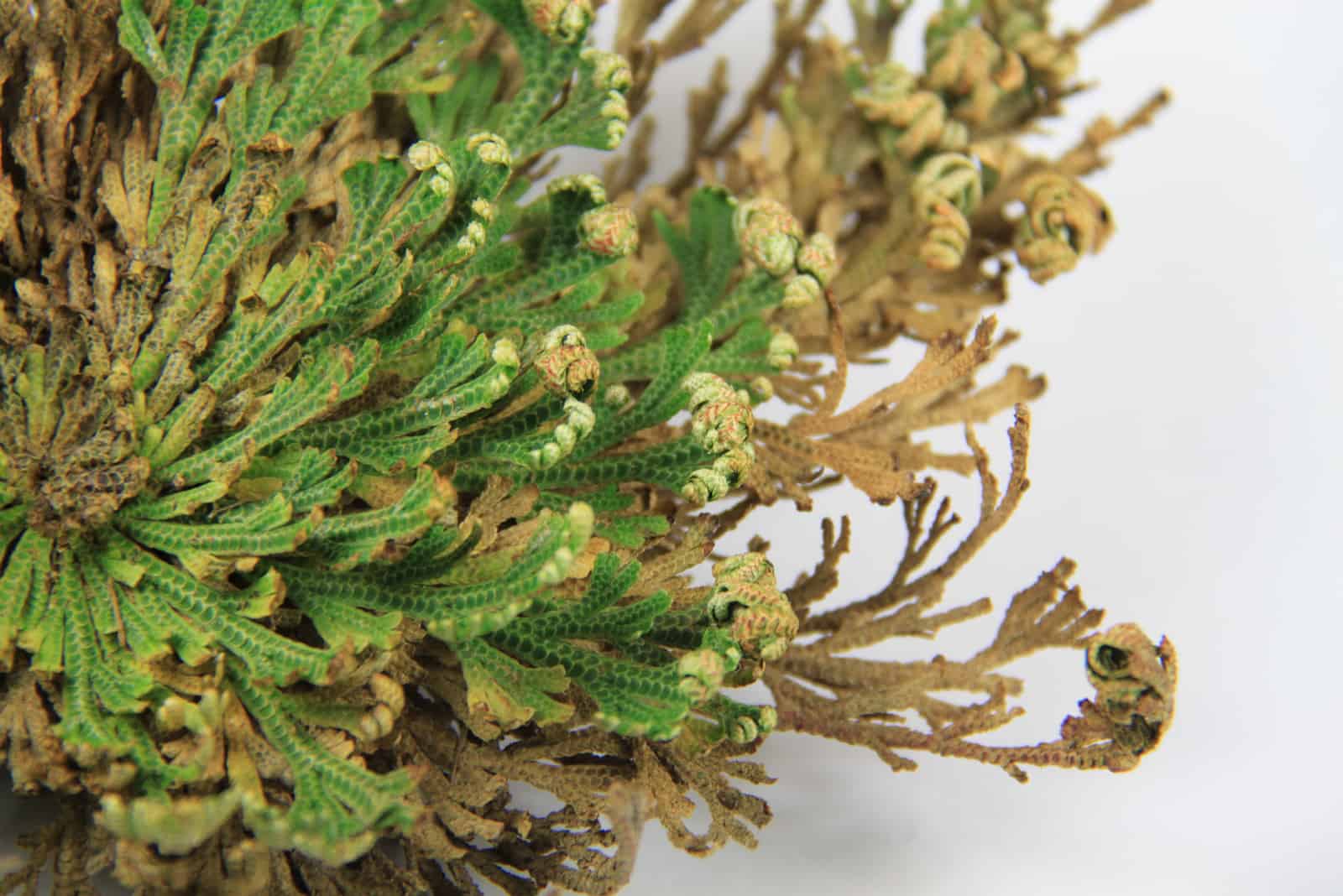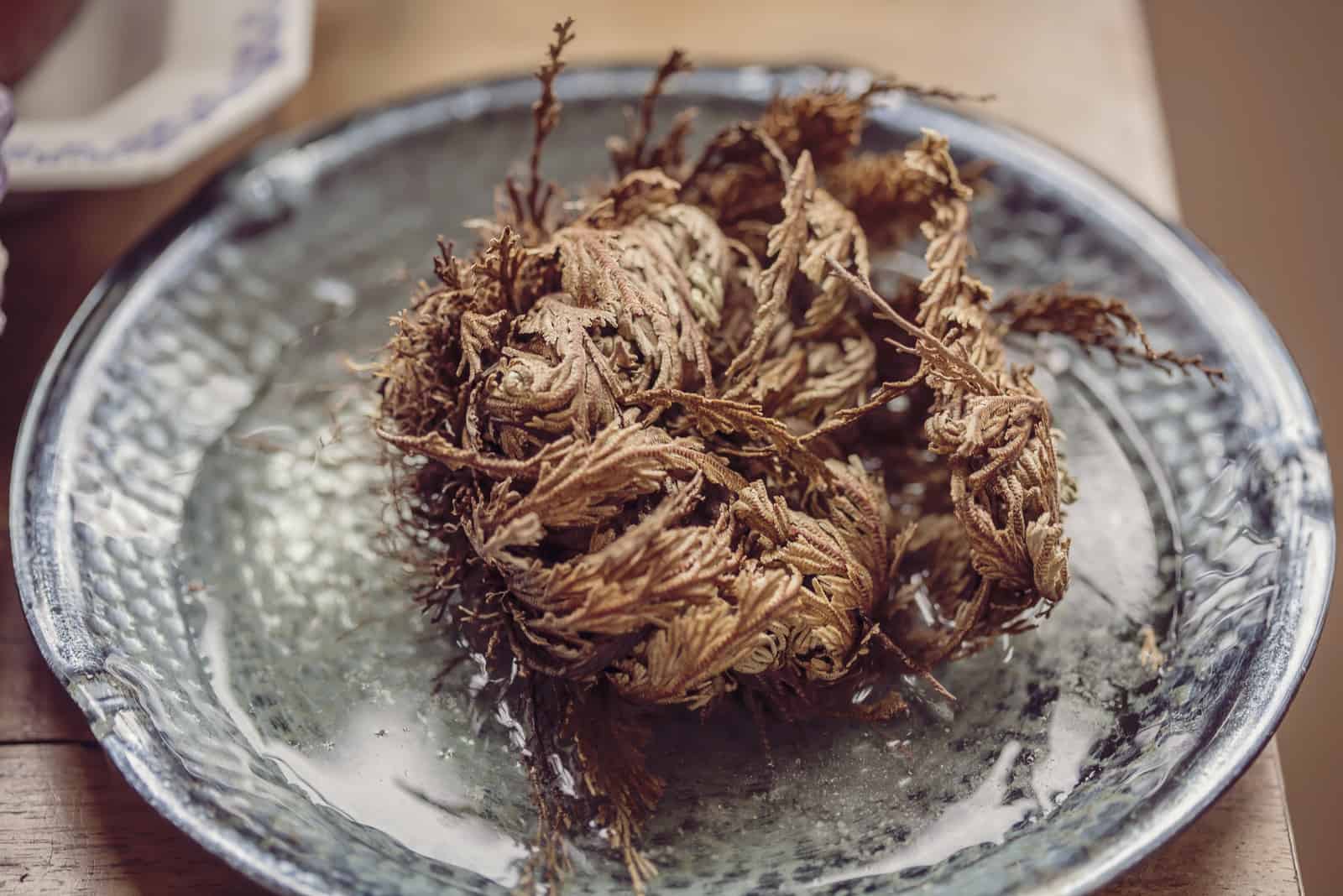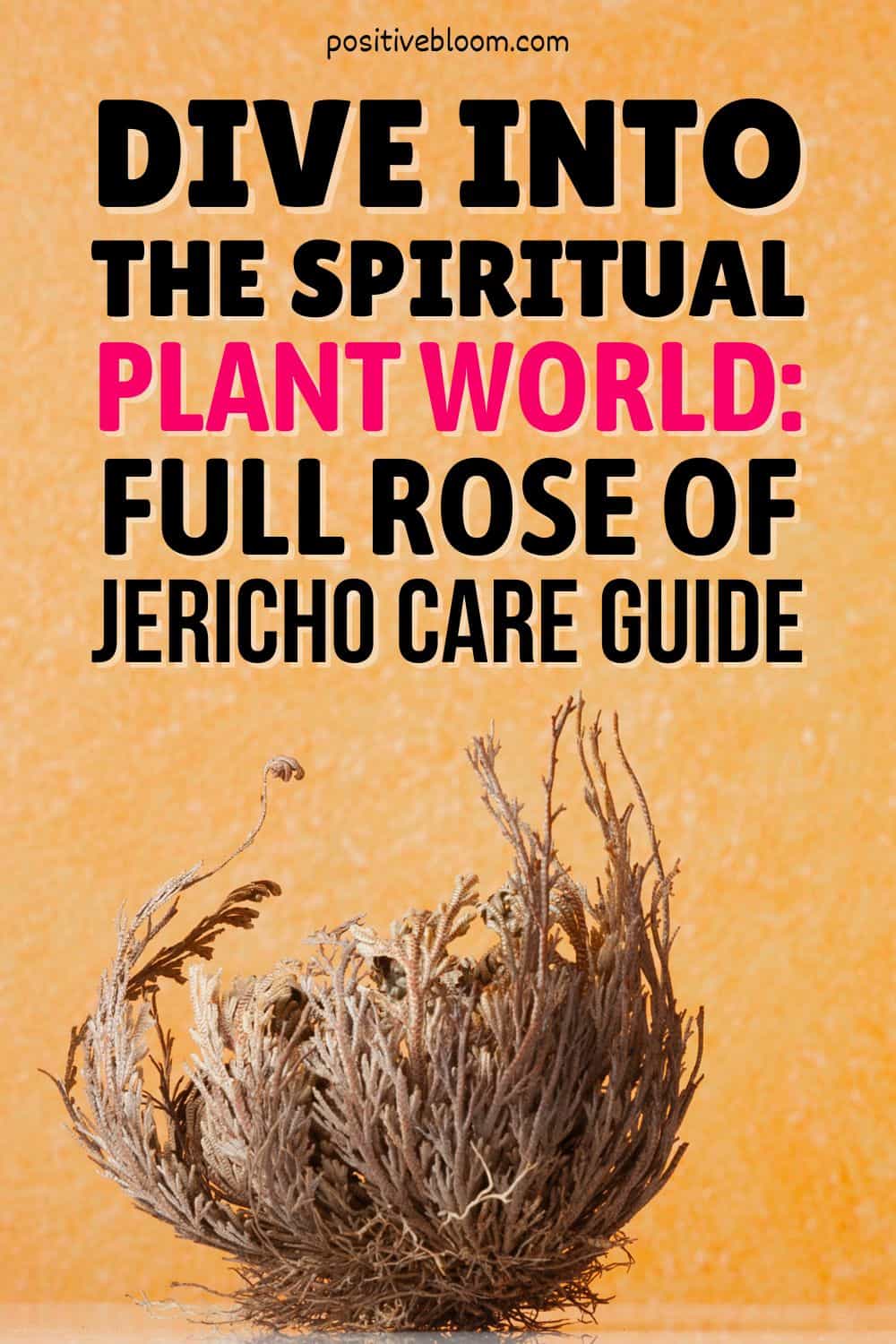Today we are going to talk about a one-of-a-kind plant that can literally come back to life!
The Rose of Jericho is a tiny moss-like plant species that grows to be less than one foot tall, with fronds a color somewhere between green and gray (in most cases!). This plant has the ability to curl its foliage upon water deprivation, before uncurling its beautiful foliage once it has found another water source.
Kinda weird, right?
Well, because it originates from a desert region, it’s used to curling up and looking like a dead root ball that’s able to blow with the wind all around the desert searching for water — just like a tumbleweed from Western movies!
After it drinks some water, the lush green, fern-like foliage uncurls, and this resurrection plant is alive once again!
Basically, this plant is perfect for folks who tend to forget to water their plants — maybe you will be able to see it moving around the house to remind you!
Even though this plant is almost indestructible, you will still have to take good care of it!
Now, let’s dive into the Rose Of Jericho care guide and learn its requirements and uses.
The Rose Of Jericho Care
Now we have established that watering is not an essential step, we still have to know what the Rose of Jericho needs in order to keep it happy and thriving!
Bear in mind that the false Rose of Jericho (Selaginella lepidophylla) is similar to the Rose of Jericho plant, so they have almost the same plant care guide, but we will talk about their similarities and differences as well!
Water Requirements
Photo from: @leithefairie
This plant doesn’t need that much water (though I doubt that you won’t water it and leave it to look like a root ball on your shelf), so it’s quite easy to overwater it, which can result in death because of root rot.
A crucial step in fulfilling the watering requirements of your new houseplant is providing it with the best pot setup!
When you buy the Rose of Jericho plant you will get a ball of roots, which is pretty unusual. There are a few steps for how to “plant” and bring it back to life — all you need is a certain amount of water and a dish.
Reviving The Rose Of Jericho
• Use a shallow bowl or a pot without drainage holes and put some pebbles in it. Though this is optional, it’s nice to give your new plant something to sit on.
• Fill the bowl or pot with lukewarm water until just the pebbles are covered. Bear in mind that tap water has some chemicals that can harm your plant, like chlorine, so it would be best to use distilled water or simply leave a bowl of water overnight to let the chlorine dissipate.
• Now, put the plant on top of the water and let the magic happen! In just a few hours, you will be able to see the beautiful and lush green foliage of your Rose of Jericho plant!
The Watering Schedule
In order to keep your beloved plant happy and healthy, all you have to do is change the water each day to keep it fresh. Simply leave enough water overnight then use it in the morning to fill the dish or the pot.
It’s extremely important to take the plant out of the water for a whole day to let it dry out a bit. After you have established a watering schedule, you should leave your plant in complete dryness for a week by pouring the water out and leaving the plant on the pebbles or elsewhere to dry.
Pro tip: You can let your plant grow as an epiphyte. This means that it can attach to another plant and lead a normal life, you just need to mist the plant every now and then.
Soil Requirements
Even though this plant can grow in water perfectly well, you can also go a different route and plant it in soil!
A True Rose of Jericho will thrive and bloom in soil, while a false Rose of Jericho should be left in water for about two days and then be transferred to the soil.
It’s important to keep the soil moist, so you should water the plant until the water starts dripping out of the drainage holes at the bottom!
Invest in high-quality and well-draining soil, but be aware that they can grow quite large in soil.
Light Requirements
The Rose of Jericho plant prefers growing in indirect light, though it can tolerate a few hours of direct sunlight during the day.
If your plant starts curling up even though it has plenty of water, then the issue is probably inadequate lighting. This is the reason it will curl up if you put it in a cupboard over the winter.
But hey, no worries!
Your plant will uncurl as soon as you provide it with adequate lighting.
Temperature Requirements
Even though this plant originates from the desert, the Rose of Jericho plant can easily adapt to various temperatures between 30 to 85 degrees Fahrenheit. This means that room temperature should work just fine.
However, they don’t like temperature fluctuations.
Keep your plant away from cold drafts, air conditioning, and vents, and also from heat sources like radiators or space heaters.
Pruning Requirements
You won’t have to spend too much time pruning your Rose of Jericho plant as it doesn’t grow excessively.
Some growers don’t prune it at all!
However, you can use disinfected pruning shears to remove any dead leaves that didn’t come back to life after the plant was revived.
Pruning will make your plant look nice and neat!
Fertilizer Requirements
This plant has to actually travel to look for water, so it doesn’t have special requirements for nutrient-rich soil.
This means the plant doesn’t need any fertilizers to bloom and grow!
Propagation
If you want to have more Rose of Jericho plants or to give some away as a gift, you don’t need to spend money on another one because you can easily propagate it!
The best propagation method is by division. Just divide a few roots and cut them with clean pruning shears, then put them in a bowl of water. Soon, you will be able to see a new Rose of Jericho!
It will take a couple of weeks for your new plant to grow and develop to its regular size. If you want your plant to grow larger, then plant it in moist soil.
More About The Rose Of Jericho
Now that we have covered plant care, let’s talk about the Rose of Jericho plant in more detail, including some interesting myths, its appearance, medical uses, and some common issues you might encounter.
Check out the information below to see the classification and some common names for the Rose of Jericho plant.
[table id=180 /]
The Rose Of Jericho: Appearance & Features
Photo from:@house.flower.zhiwan
It has small branches with thin green leaves coming out of the stems that look just like ferns. When hydrated, the plant produces beautiful white flowers, even though they don’t need any nutrients.
The Rose of Jericho is truly full of surprises!
As we previously mentioned, it is able to curl up when left without the water and can survive for a long period of time in this state. Luckily, the plant can literally come back to life once it has found another water source.
Though it can adapt to different growing conditions, the perfect USDA hardiness zones are from 8a to 11.
Check this time-lapse video of the Rose of Jericho’s life cycle:
True Rose of Jericho vs False Rose of Jericho
Two different plants from different plant families originating from two different places that look and act exactly the same — how is it possible?!
Well, both plants evolved in a similar environment: the True Rose of Jericho originates from the deserts of the Middle East, and the false Rose of Jericho from the Chihuahuan desert of Mexico and Arizona. This means that they both had to adapt to drought and sun.
The false Rose of Jericho, otherwise known as Selaginella lepidophylla, is a spikemoss plant that has emerald green fern-like leaves.
We have already covered the classification of the True Rose of Jericho: it is known as Anastatica hierochuntica and belongs to the Mustard family.
When we compare these two plants, we can conclude that:
• False Rose of Jericho is more affordable
• True Rose of Jericho is associated with meaningful beliefs
• False Rose of Jericho is prettier
• Both have similar plant care
The Rose of Jericho: Spiritual & Religious Beliefs
The Rose of Jericho is quite popular in the spiritual world!
According to the nickname “resurrection”, it is believed that this plant symbolizes the death and resurrection of Jesus Christ in Christianity. The Rose of Jericho plant is often displayed as a decoration on Easter and Christmas, and its oil extract is used to make holy water.
In Hoodoo, the Jericho plant symbolizes a source of prosperity. It is common to use the water in which the plant was revived; they put five coins in the water for a few days, and then rub that water onto their windows and doors to attract prosperity.
Sometimes it is used in love spells to resurrect one’s love life — this plant is already in my cart, I will let you know whether this belief is valid or not!
In the Santeria religion, the Rose of Jericho is believed to bring happiness and spiritual awakening.
The Rose of Jericho: Medical & Scientific Uses
Given the fact that this plant has the ability to survive a long period of time without water, scientists are definitely interested in the molecular mechanism of this plant and trying to find a way to incorporate this unique feature into other crops that tend to deteriorate quickly.
Thanks to biotechnology and DNA recombination, we can now manipulate genes and metabolites to create drought-resistant crops!
“In addition to drought stress, these metabolites are proposed to contribute to the protection against other abiotic stresses and to an increased oxidative stress tolerance. Recently, extracts of resurrection species and particular secondary metabolites therein were reported to display biological activities of importance to medicine, with e.g. antibacterial, anticancer, antifungal, and antiviral activities, rendering them possible candidates for the development of novel drug substances as well as for cosmetics.” – says Tsanko and other authors in this article: “Natural products from resurrection plants: Potential for medical applications”.
However, the Rose of Jericho was also used in traditional Egyptian medicine, primarily for treating arthritis pain and fatigue, while in Mexico it was used to induce labor and predict childbirth.
The False Rose of Jericho is used to treat sore throats and the common cold; people make herbal teas out of the leaves and flowers.
The Rose of Jericho: Decorative Uses
A great thing about this indoor plant is that it has two completely different appearances, so you can use it as a decoration for an edgier and rustic aesthetic, or you can hydrate your plant and wait for its lush foliage to uncurl!
Once hydrated, the green foliage can make any room look more lively, especially when it starts blooming!
The little yellow flowers make the plant even prettier, and you can put it anywhere because of its small size.
The curled-up root ball can be decorated in a similar way to pinecones, and when you get bored of it, just put it in water and observe how it comes back to life.
The Rose of Jericho: Common Issues
Even though it seems like this plant is indestructible, you will likely have to deal with a few issues, including toxicity, the plant not being able to revive, or pest and disease infestation.
Let’s go through them one by one and see how to fix them!
Toxicity
We have already mentioned that this plant is commonly used in herbal medicine, but many people still wonder if the Rose of Jericho toxic.
It isn’t toxic to humans, and can be used to make teas and meals, however, the Rose of Jericho is toxic to cats. It can cause irritation if ingested, so it would be best if you keep your cats away from the resurrection plant!
Pest Infestation
Common pests that invade indoor plants will love those lush fern-like leaves.
The Rose of Jericho is prone to mealybugs, spider mites, and whiteflies.
If you notice any tiny webs or browning on the leaves, investigate the plant and look for these small creatures. They are barely visible to the naked eye, so make sure that you really get in there!
If you spot them, you can use pesticides or insecticidal soap for treatment.
Stays Brown
When you buy a brand new Rose Of Jericho, you will get a brown root ball that is supposed to turn into a lovely plant with lush foliage.
So, why isn’t anything changing?
You may have been scammed. Some people sell the Rose of Jericho in its completely dead form. They can do this quite easily because this plant is being sold in its “dead” state, so you won’t be able to tell the difference.
Takes More Time To Open
If your Rose of Jericho is taking forever to fully open, you can do a few things to speed up the process:
• Use lukewarm water instead of cold.
• Put the plant in a warmer spot.
• Provide it with adequate lighting.
Rotting
Sometimes your plant will start to smell, turn brown, and rot. You probably left it in water for too long if this happens, especially if you don’t change the water every day!
You can trim off any browning and mushy stems then continue with proper plant care by changing the water every morning and making sure to take the plant out of the water and leave it to dry out.
Mold On Rose Of Jericho
Mold is a common issue when growing the Rose of Jericho plant, and the best thing you can do is dehydrate your plant by taking it out of the water and letting it curl up.
After about two weeks, you can put it in water and check if the mold is still there.
If it is, then you can treat it with baking soda. Apply a small amount of baking soda to the infected areas, but be careful because baking soda can harm your Jericho!
You Asked Us
1. Can you overwater a Rose of Jericho?
As this plant can survive a long period of time without water, frequent watering can cause some issues like root rot. So yes, you can overwater your Rose of Jericho, which can eventually kill your plant.
To deal with this issue, simply take your plant out of the water one day a week. You should also let it completely dry out for a week every month. If you are keeping this plant in soil, keep the soil constantly moist, but also skip one day of watering and let the plant completely dry out each month!
2. What is the best way to store a Rose of Jericho?
The best way to store a Rose of Jericho plant is to let it curl up and then place it in a paper bag. Keep it in a cool and dry place because you don’t want your Jericho plant uncurling out of nowhere!
I keep mine in a cupboard where it won’t get crushed or wet.
3. What type of soil does the Rose of Jericho like best?
As this plant can grow in water without soil, it doesn’t really have any type of soil preference.
However, if you are considering growing your Rose of Jericho plant in soil, make sure to plant it in a well-draining one that can retain moisture because it needs constantly moist soil.
Bear in mind that they can grow much larger in soil compared to the ones grown in the water.
Final Words
When I got my first Rose of Jericho, I was completely stunned when it started opening up — nature never ceases to amaze me!
It can be really hard to believe that you’ll get one of the prettiest houseplants in the world from that small brown root ball with just a little water.
Water is life, just ask the Rose of Jericho!
Given the fact that this plant has so many purposes in the spiritual and religious worlds, and can also be used in medicine and herbal medicine, it’s definitely worth buying, especially as it is also one of the easiest plants to take care of!
When it comes to the Rose of Jericho care guide, you simply need to give your plant some water, keep it at room temperature, and provide it with adequate lighting, and your plant will be thriving in no time!
When you get tired of it (though I doubt that’s possible), you can simply take it out of the water, leave it to curl up, and store it in a cupboard.
It’s as simple as that.
Until next time!
Like this post? Share or pin it for later!

